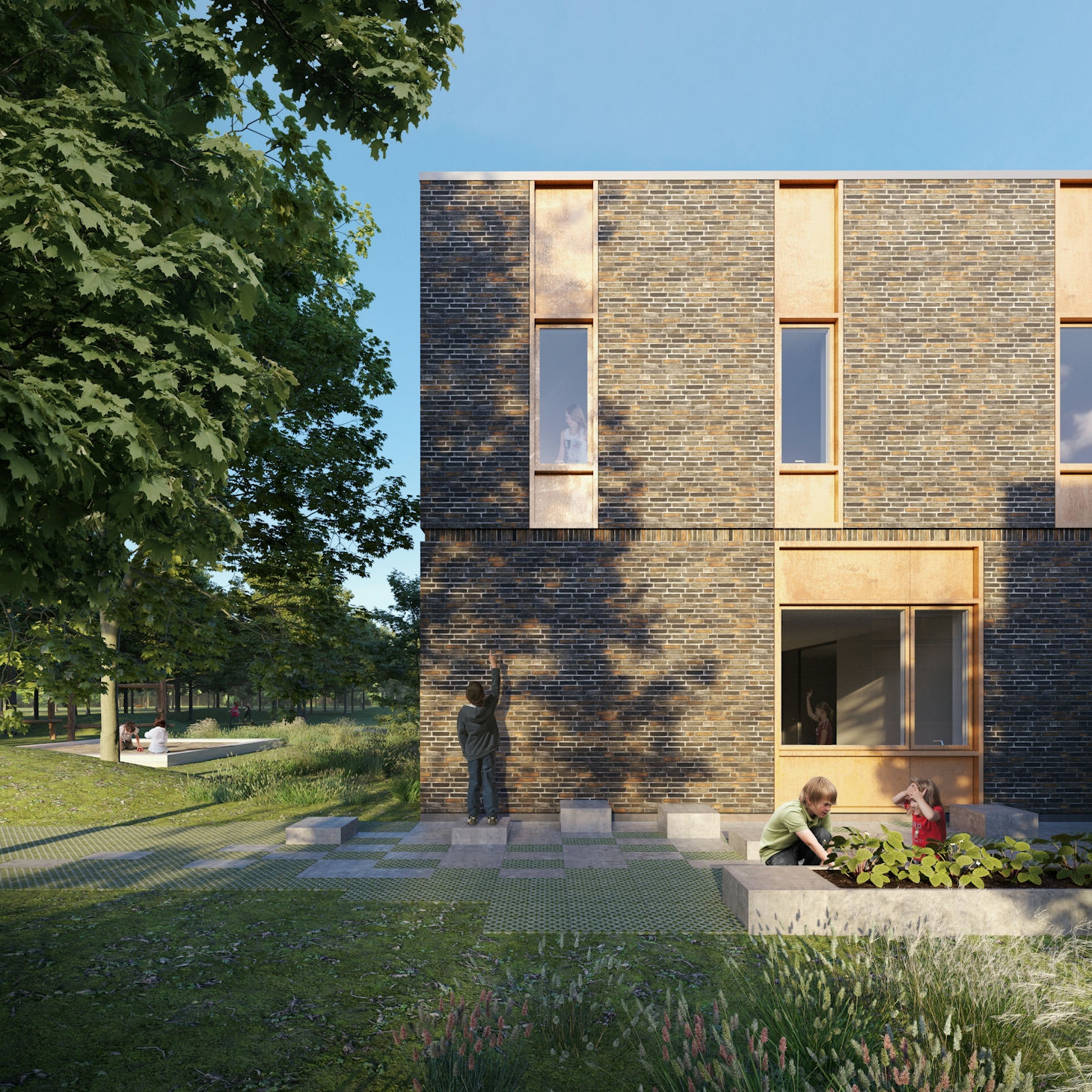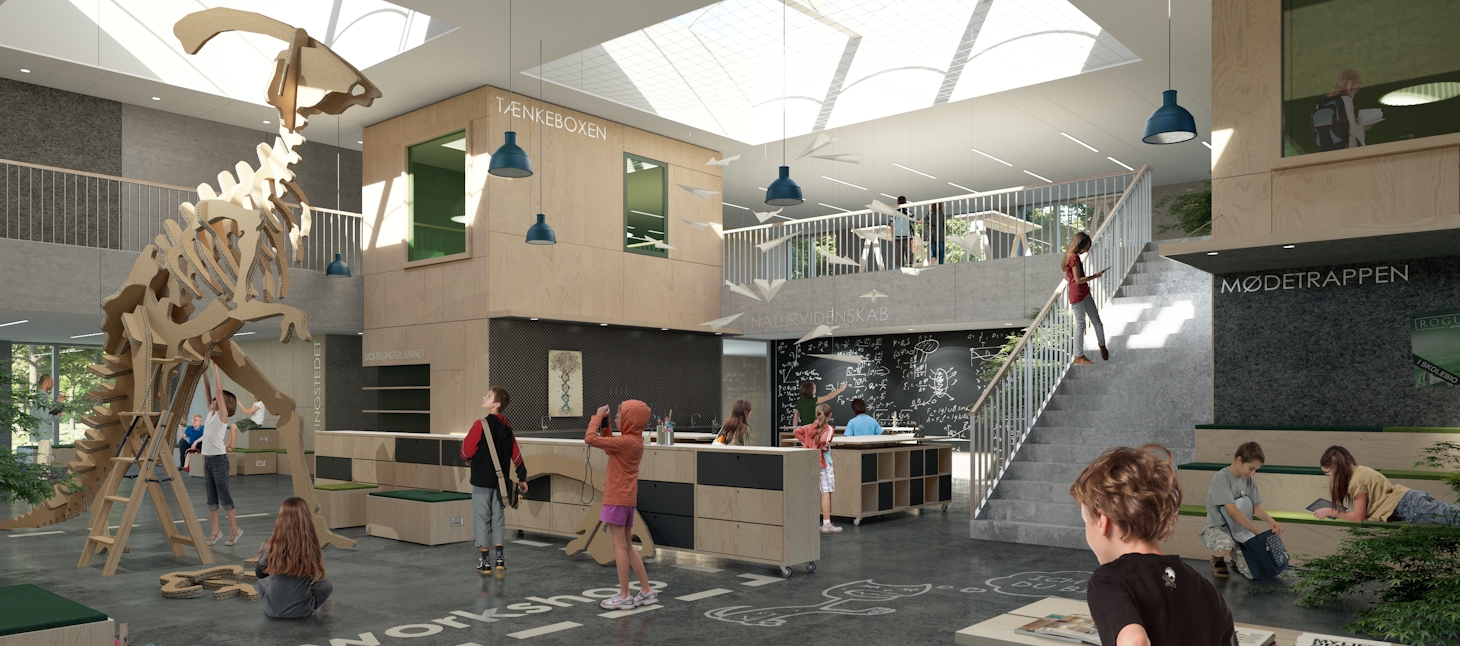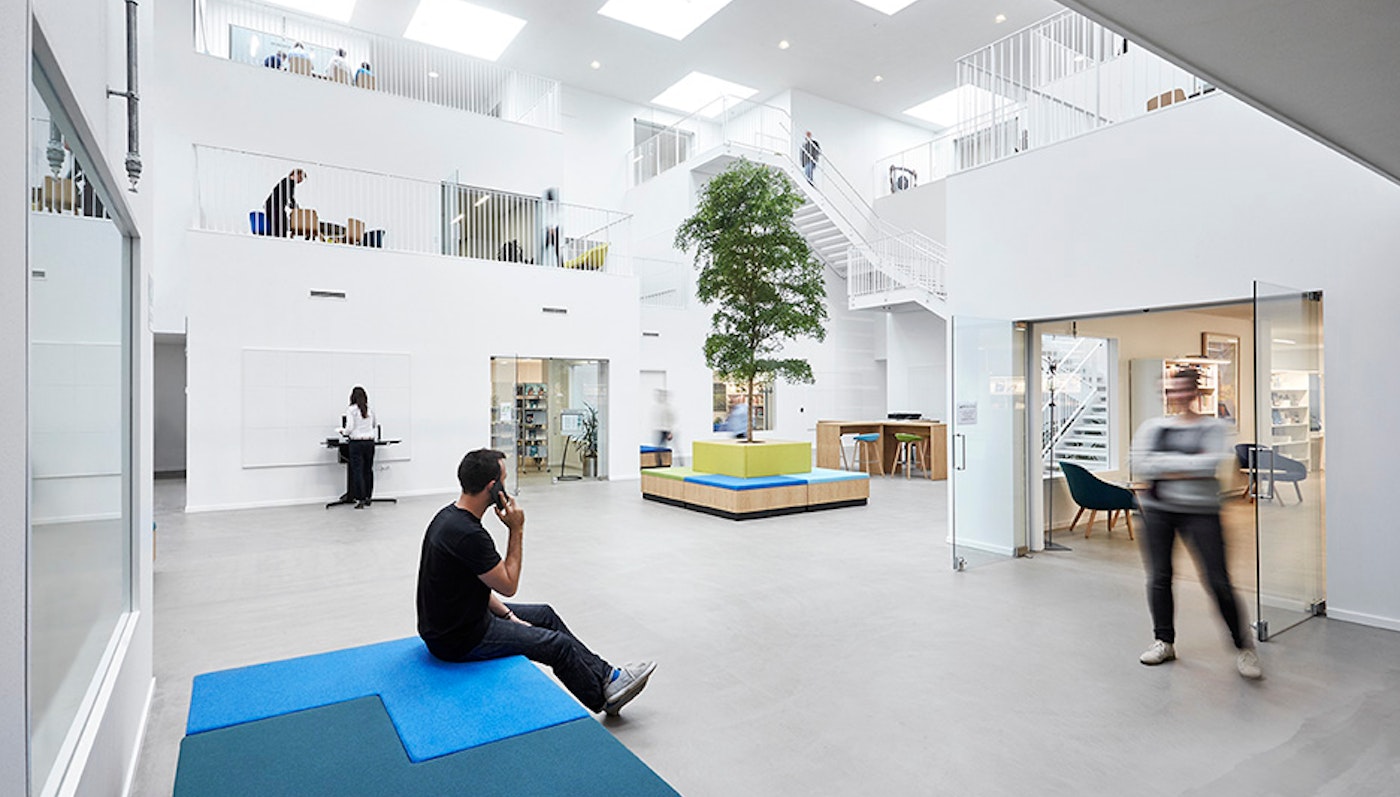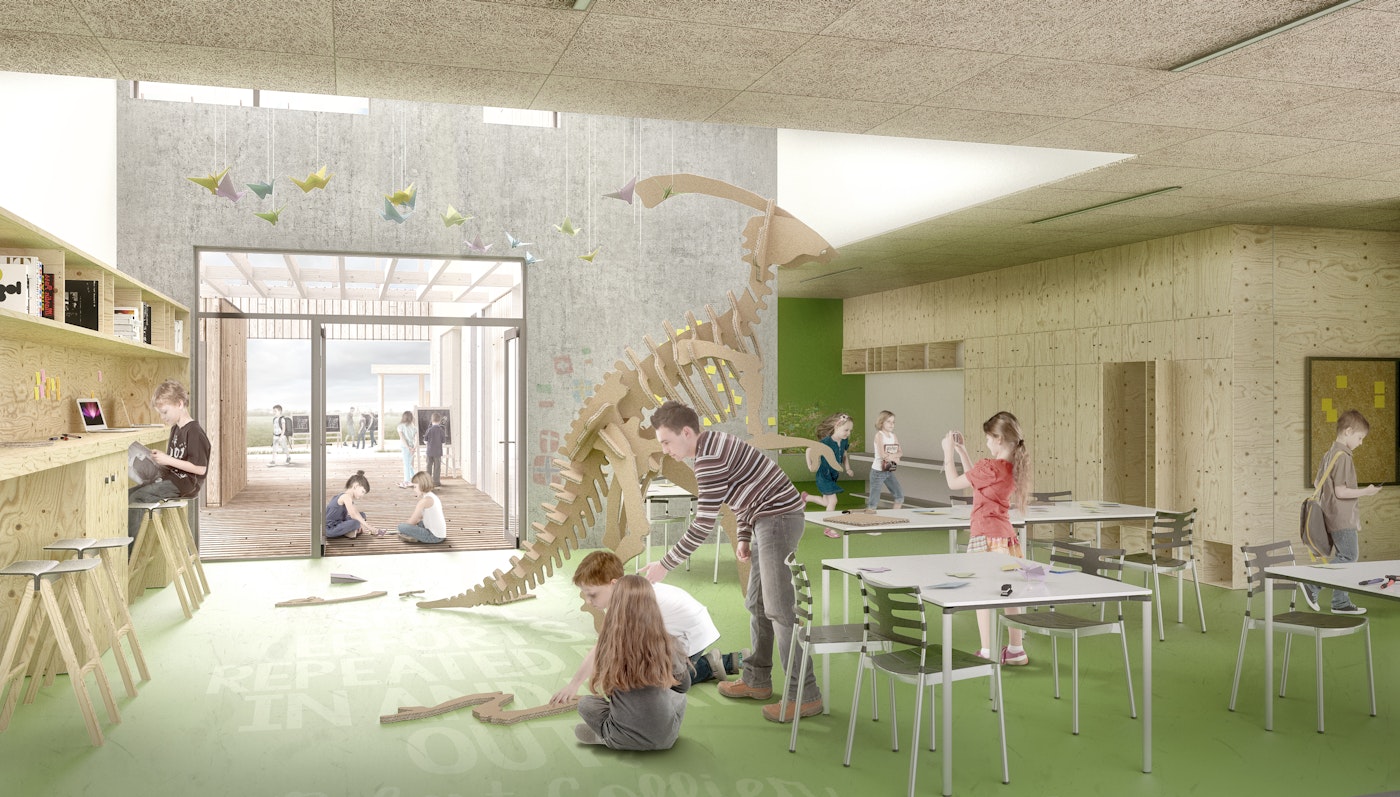A modern learning environment with the forest as a reference
When designing both the architectural concept and the educational approach, the priority was the educational vision, in which the forest is used as an educational reference point and as a special core value for everyday life. The aim of the architecture is to interact naturally with the vision and add new facets to Lindbjerg School. In this context, architecture is very much a fusion of physical structures, day-to-day teaching and the way, in which children and adults encounter the world.
We made a conscious choice to work with several little ‘schools’ within the big school. That means that reception, intermediate and lower secondary departments are laid out as independent atrium buildings. Each building provides the relevant facilities and context for the particular year group and pupil. So each of these buildings acquires its own innate identity with strong references to the children’s level of education. Between these solitary buildings are communal facilities - referred to as ‘3rd Spaces’. These spaces are designed as a protected outdoor area, which introduces the forest into the daily lives of the children, so it becomes an unavoidable focal point for the life and use of the school.
The positioning of the buildings in relation to each other is diverse, thereby drawing both the landscape and the forest right into the school, creating a close and direct connection with the outdoor spaces. The buildings seem to be located in a clearing in the forest, so children have a close-up experience of tree trunks, trees and the forest floor. Horizontally, the school is constructed in two ‘layers’. The ground floor houses the outward-oriented, informal, creative classrooms, closely linked to the outdoor areas and outdoor workshops. The first floor houses the more theoretical, programmed classrooms. This creates a natural division in the school, which is also part of the forest’s rhetoric. The tree trunks/roots/body are rooted in the earth and unfold in space, while the crown/head reach to the sky, providing space for reflection and vision.
Location
Hammerum, Denmark
Client
Herning Municipality
Size
13.500 m²
Architect
FRIIS & MOLTKE Architects
Landscape architect
Eng Arkitekter
Engineer
Orbicon
Contractor
A. Enggaard
Competition
2017







